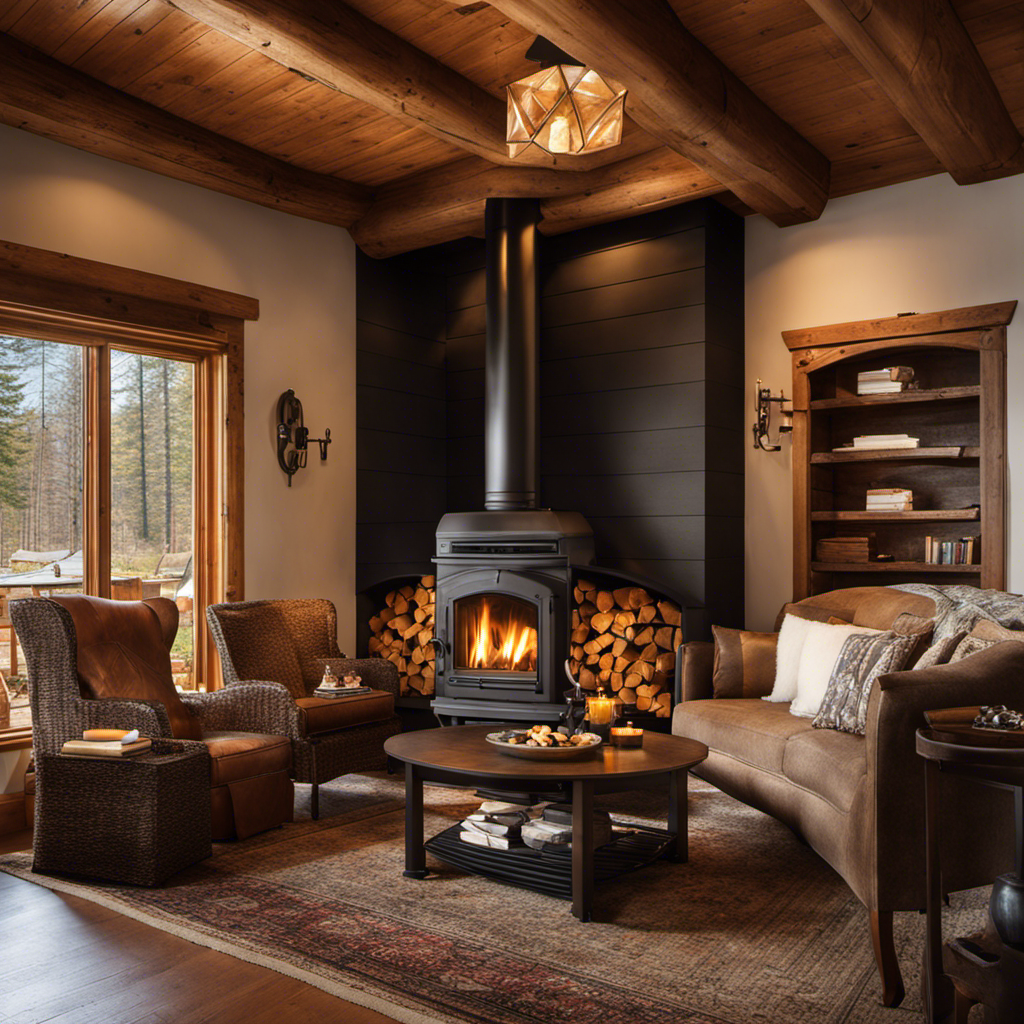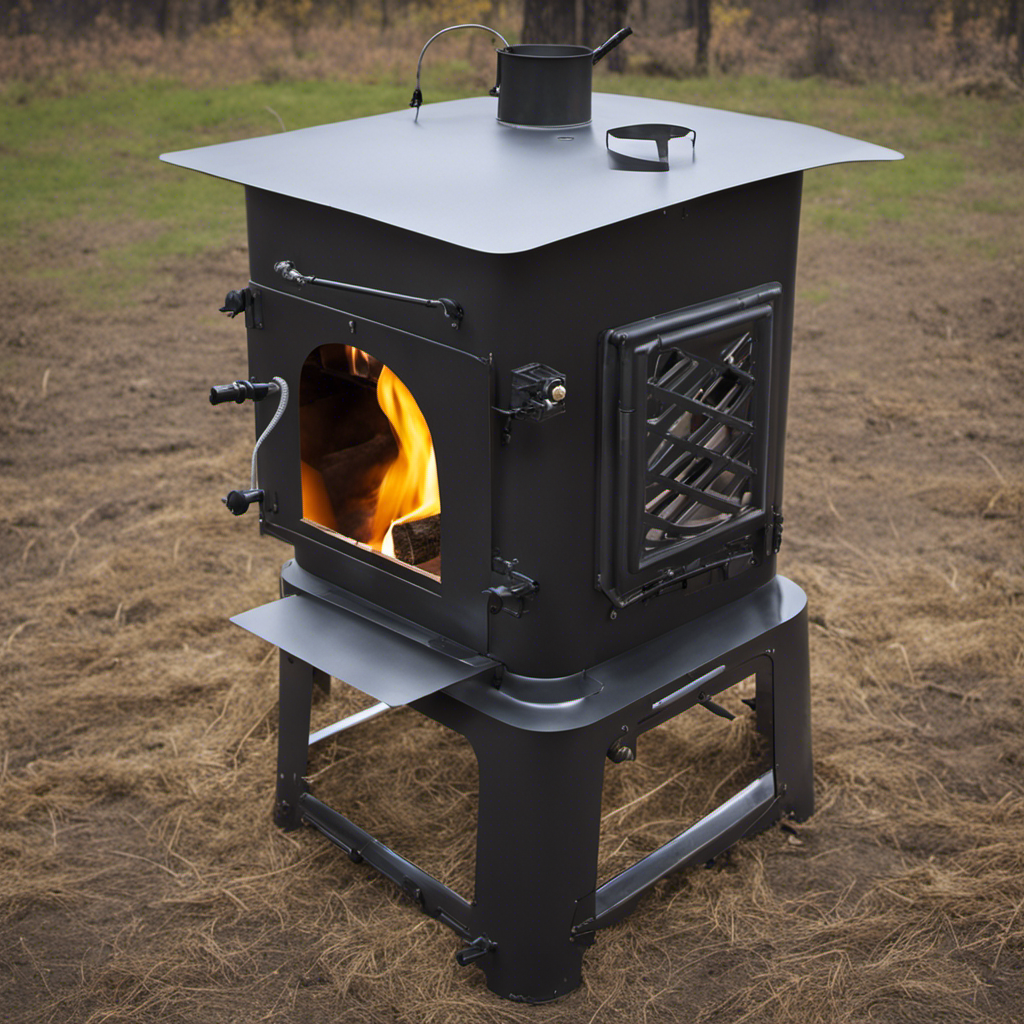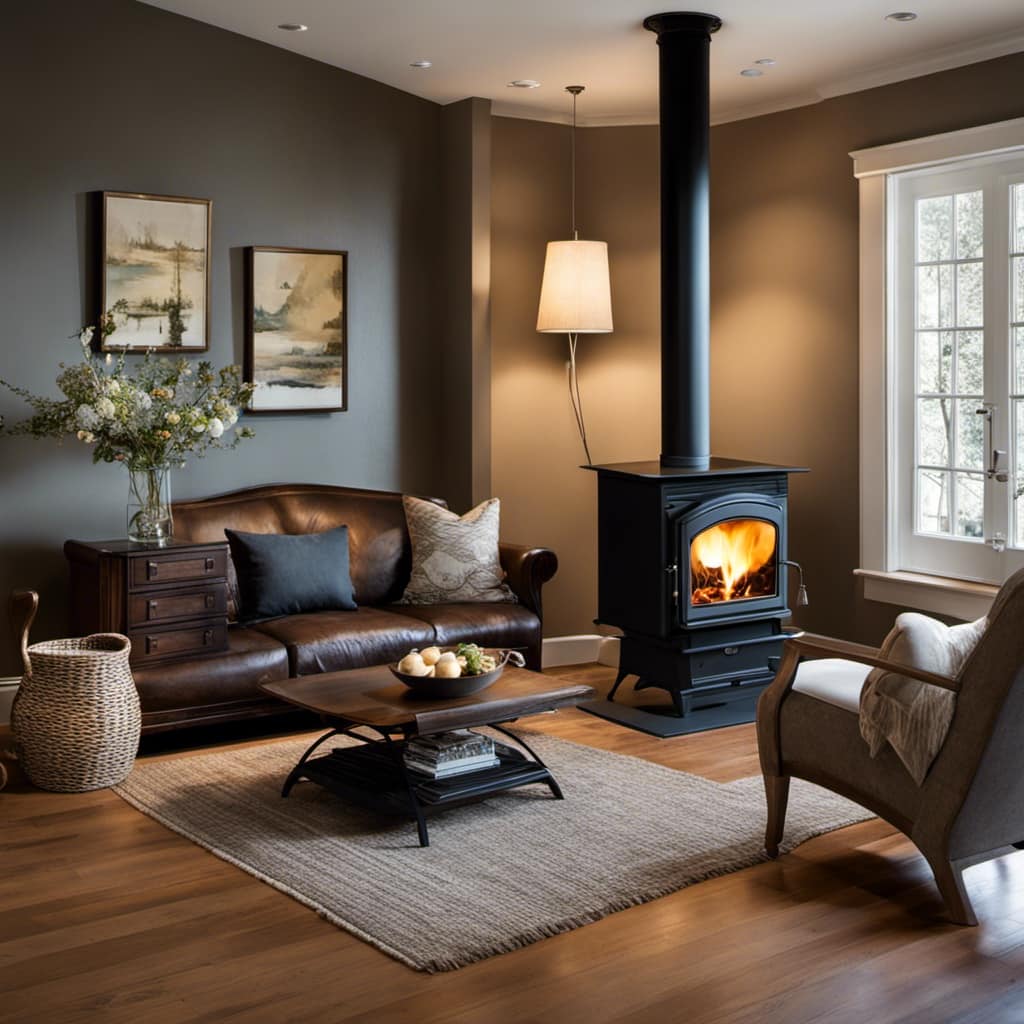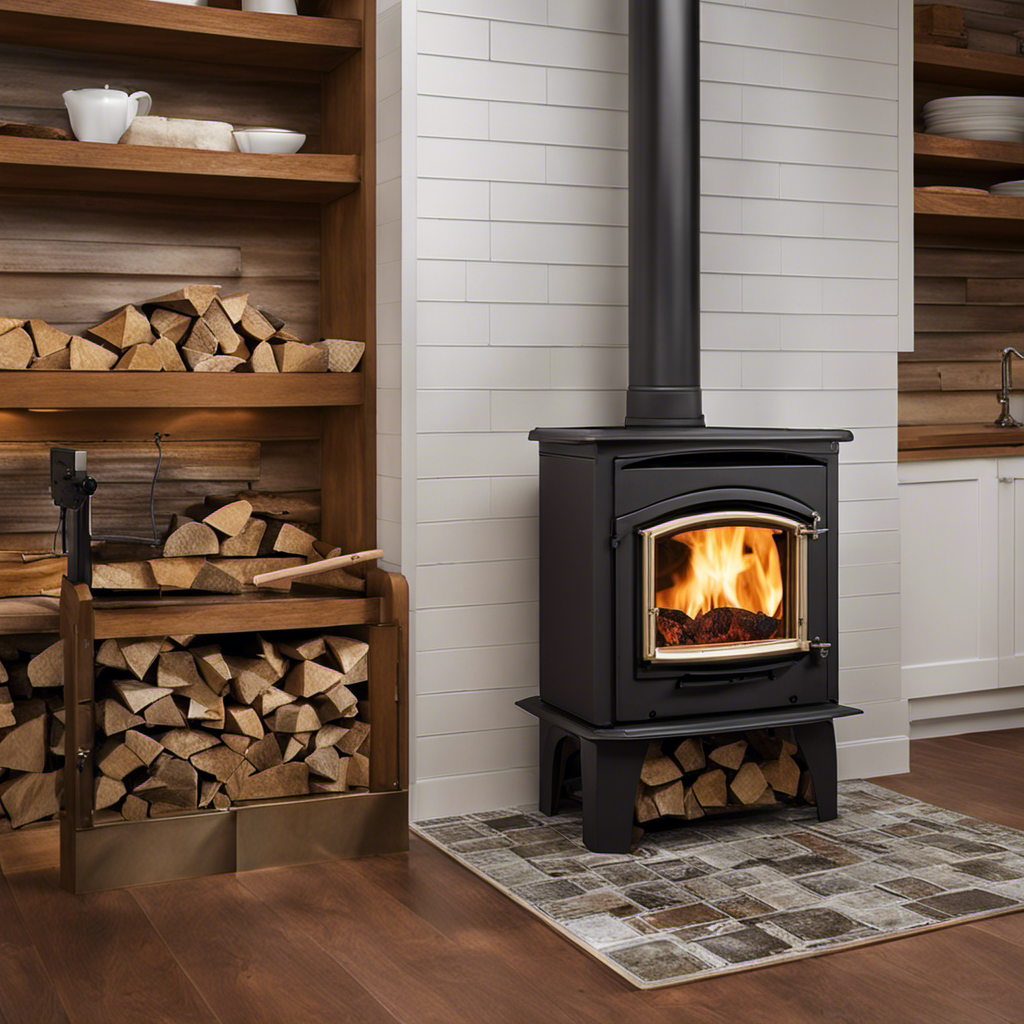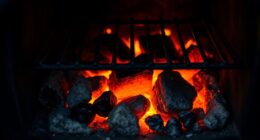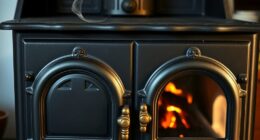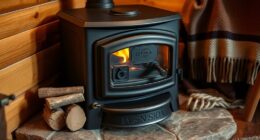It is often said that nothing can compare to the comforting, warm embrace of a wood stove insert.
In this guide, I’ll share my firsthand knowledge and experience on how to use a wood stove insert effectively.
From selecting the right wood to controlling the heat output, I’ll provide detailed steps to ensure a comfortable and efficient heating experience.
So, if you’re ready to learn the ins and outs of using a wood stove insert, let’s get started!
Key Takeaways
- Choose hardwoods like oak, maple, or hickory for optimal performance.
- Ensure the wood is properly seasoned for efficient burning and less smoke.
- Clean the flue thoroughly with a chimney brush.
- Regularly remove ashes and debris from the firebox.
Selecting the Right Wood for Your Stove Insert
I always make sure to choose the right type of wood for my stove insert to ensure optimal performance. When it comes to selecting firewood, there are a few key factors to consider.
First and foremost, it’s important to choose hardwoods like oak, maple, or hickory. These woods burn longer and produce more heat compared to softwoods like pine or cedar.
Additionally, I make sure the wood is properly seasoned, meaning it has been dried for at least six months. This ensures that the wood burns efficiently and produces less smoke and creosote buildup.
Lastly, I maintain proper ventilation by ensuring the stove insert’s air vents are open and free from any obstruction. This allows for a clean and efficient burn.
With the right firewood and proper ventilation, my stove insert performs at its best.
Now, let’s move on to preparing the stove insert for use.
Preparing the Stove Insert for Use
To properly prepare the stove insert for use, it’s important to clean the ashes and check the chimney for any blockages. Ensuring proper ventilation and taking safety precautions are essential for a safe and efficient wood stove experience. Here are the steps to follow:
-
Remove any remaining ashes from the stove insert using a metal scoop or shovel. Dispose of them in a metal container, away from any flammable materials.
-
Inspect the chimney for any creosote buildup or debris. Use a chimney brush to clean the flue thoroughly.
-
Install a chimney cap or spark arrestor to prevent animals and debris from entering the chimney.
Starting and Maintaining a Fire in Your Stove Insert
When starting a fire in my stove insert, I always make sure to carefully place the logs between the grates and below the kindling, so that they catch fire easily and provide a steady source of heat throughout the evening.
However, it’s essential to take fire safety precautions to ensure a safe and efficient fire.
Before starting the fire, I make sure the stove insert is clean and free from any debris. I also ensure that the flue is open and the damper is properly adjusted. Additionally, I keep a fire extinguisher nearby and never leave the fire unattended.
Troubleshooting common issues, such as a smoky fire or difficulty in lighting, requires checking for proper airflow, adjusting the damper, and ensuring the logs are dry and properly positioned.
Controlling and Adjusting the Heat Output
Although it requires some trial and error, adjusting the damper and airflow is crucial in controlling the heat output of my stove insert.
To set the optimal temperature, I follow these steps:
- Begin by opening the damper fully to allow maximum air flow.
- Once the fire is burning steadily, slowly close the damper to reduce the air intake and lower the heat output.
- Monitor the temperature gauge and make small adjustments to the damper as needed to maintain the desired temperature.
Understanding draft control mechanisms is also important in heat control. By manipulating the damper and airflow, I can increase or decrease the draft, which affects the intensity of the fire and the amount of heat produced.
In conclusion, mastering the art of adjusting the damper and airflow is essential in controlling the heat output of a wood stove insert.
Now, let’s move on to the next section about cleaning and maintaining your wood stove insert.
Cleaning and Maintaining Your Wood Stove Insert
I regularly clean my wood stove insert to ensure it operates efficiently and safely. Cleaning and maintaining a wood stove insert is essential for its optimal performance and longevity. By following proper cleaning techniques, you can prevent potential issues and ensure a warm and cozy winter.
Here are some helpful tips to keep your wood stove insert in top shape:
-
Regular Cleaning: Remove ashes and debris from the firebox and clean the glass regularly to maintain a clear view of the flames.
-
Chimney Maintenance: Schedule an annual chimney inspection and cleaning to remove creosote buildup, which can reduce efficiency and pose a fire hazard.
-
Troubleshooting Common Issues: Address issues like poor draft, excessive smoke, or difficulty in starting the fire promptly to prevent potential problems.
Frequently Asked Questions
How Long Does It Take for a Wood Stove Insert to Heat up a Room?
It usually takes about 30 minutes to an hour for a wood stove insert to heat up a room. Factors like the size of the room, insulation, and the efficiency of the insert can affect the heating speed.
Can I Use Manufactured Logs in a Wood Stove Insert?
Yes, you can use manufactured logs in a wood stove insert. They are convenient and burn cleaner than natural wood. However, they may not provide the same level of warmth and ambiance as burning natural wood.
Is It Safe to Leave a Fire Burning Overnight in a Wood Stove Insert?
It is generally not safe to leave a fire burning overnight in a wood stove insert. Fire safety should always be a top priority, and proper maintenance includes ensuring the fire is completely extinguished before leaving it unattended.
Can I Cook on Top of a Wood Stove Insert?
Yes, you can cook on top of a wood stove insert. I love using mine for simmering soups and stews. Just make sure to use cast iron or other cookware suitable for high heat. Regular maintenance keeps it in top shape.
What Are the Potential Health Risks Associated With Using a Wood Stove Insert?
Potential health risks associated with using a wood stove insert include carbon monoxide poisoning, indoor air pollution, and increased risk of respiratory problems. Safety precautions such as proper ventilation and regular maintenance can help mitigate these risks.
Can the Temporary Wood Stove be Used as a Replacement for a Wood Stove Insert?
Can the temporary wood stove be used as a replacement for a wood stove insert? While the temporary wood stove may provide a convenient option for heating during renovations or outdoor activities, it is not designed to function as a long-term substitute for a wood stove insert. Wood stove inserts are specifically made for efficiency, safety, and performance, offering a more permanent heating solution for your home.
Conclusion
After following these steps, you’ll be able to enjoy the warm and comforting embrace of a wood stove insert. The crackling of the fire and the scent of burning wood will transport you to a place of tranquility and relaxation.
Embrace the simplicity and beauty of nature as you bask in the gentle heat radiating from your stove insert. Create memories and cherish moments with loved ones as you gather around the glowing flames.
Let the wood stove insert be your sanctuary, providing both warmth and solace on chilly evenings.

